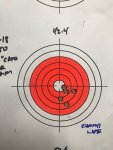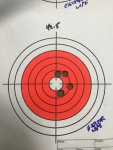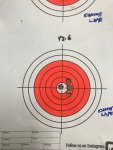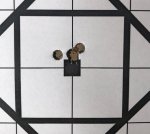Despite the crappy weather today in my neck of the woods I went to the range to fire off 11 rounds loaded up in 0.2 gn increments.
6.5 CM 140 ELD-M loaded at 2.1130" CBTO. H4350 charges were thrown with a Chargemaster Lite. The powder I have is a few years old and it was about 55 degF out.
41.0 2644
41.2 2655
41.4 2680
41.6 2684
41.8 2714
42.0 2722
42.2 2741
42.4 2778
42.6 2761
42.8 2784
43.0 2781
I kept an eye on pressure signs. Everything looked good. Based on my data, should I be looking at 42.4-42.8? If so, where should start the next load at?
6.5 CM 140 ELD-M loaded at 2.1130" CBTO. H4350 charges were thrown with a Chargemaster Lite. The powder I have is a few years old and it was about 55 degF out.
41.0 2644
41.2 2655
41.4 2680
41.6 2684
41.8 2714
42.0 2722
42.2 2741
42.4 2778
42.6 2761
42.8 2784
43.0 2781
I kept an eye on pressure signs. Everything looked good. Based on my data, should I be looking at 42.4-42.8? If so, where should start the next load at?
Last edited:







